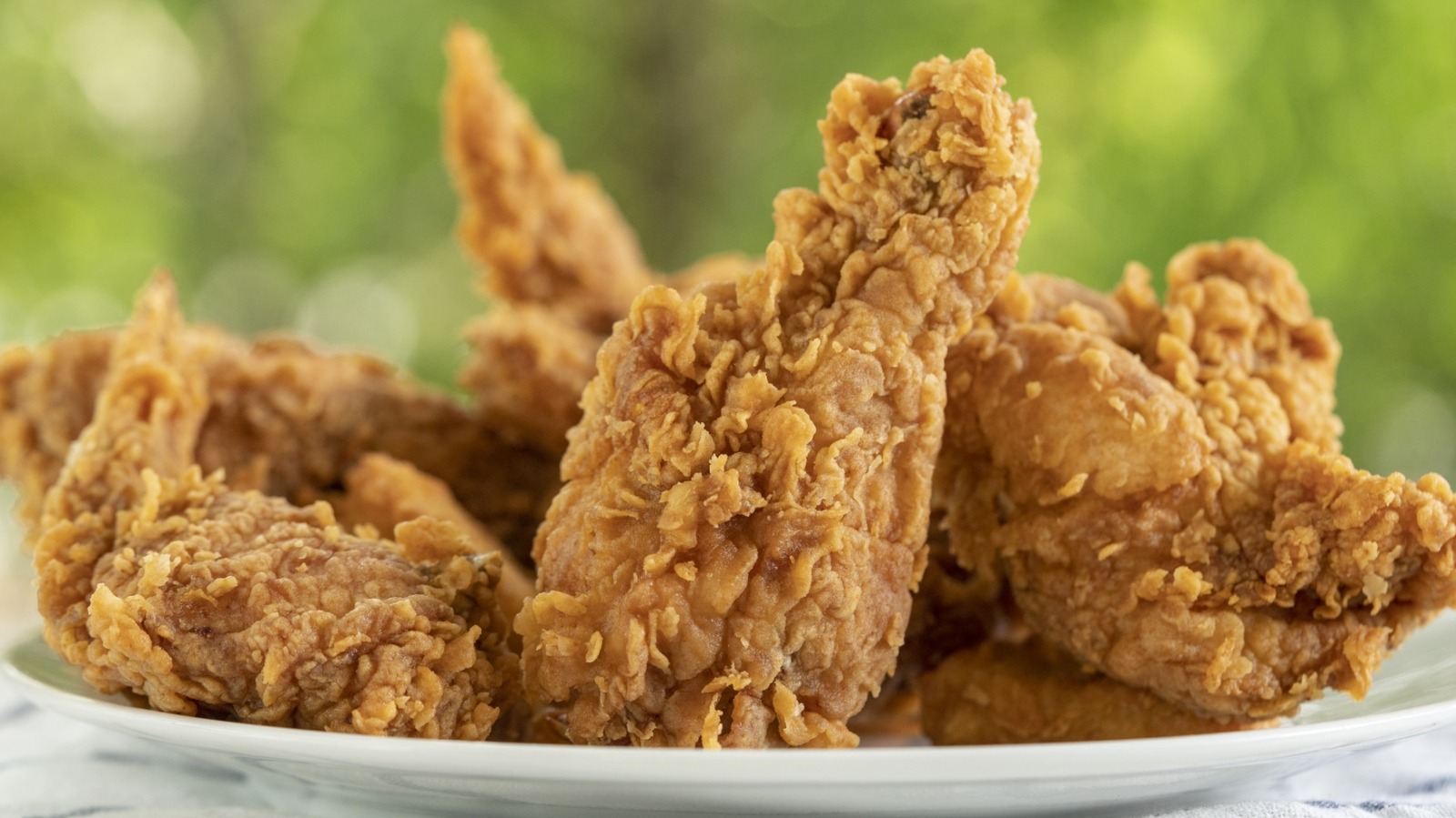We may receive a commission on purchases made from links.
More and more often, making fried chicken is like a clandestine affair, typically involving generational cast iron frying pans, exclusive family techniques, and crispy-crunchy crusts cloaking every eager bite. As a staple of Deep South cuisine, it was once considered routine — just a thing you had for supper. But fortunately, Southern-style fried chicken is breaking free of traditional boundaries, marching steadily across state lines to perch on far-flung plates.
That includes Massachusetts, where we discovered an expert on a specific style: classic buttermilk fried chicken. For that, we’re sharing insights from chef Lambert Givens, executive chef at Hunter’s Kitchen & Bar in Boston. With fried chicken appearing in several iterations across the restaurant’s deeply Southern menu, he knows a thing or two about cooking those tender, crispy, flavorful chunks of chicken we love and covet.
Before delving into secret territory with Givens, a little primer on buttermilk could be helpful. Chefs extolling its virtues point to how the acidic nature of buttermilk helps break down tough chicken proteins, resulting in tender meat. It also imparts a slightly tangy flavor and provides a thick texture to keep the crust firmly in place. From that foundation, Givens adds some more nuanced practical advice.
Brine that bird before buttermilk enters the equation
Brining meat is normally a take-it or leave-it technique, depending on tradition or conviction. For example, brining a Thanksgiving turkey is recommended more often now, given the potential of long cooking times to dry out the bird. But brining individual pieces of chicken before frying them? Not so much. However, that’s exactly what Givens recommends for buttermilk fried chicken. “Brining the chicken before making buttermilk fried chicken is not necessary,” he notes, “but it can enhance the flavor and juiciness of the meat.” Notably, this takes place long before buttermilk enters the equation.
Brining will likely be the first thing you do when prepping chicken for the frying pan. But first, you must decide between using a wet brine or a dry brine. The most common type, often referred to as a “wet brine,” typically involves soaking raw chicken pieces in a solution of water, salt, and spices for at least 12 hours before cooking. An alternative “dry brine” method involves directly rubbing each piece with coarse kosher salt and letting it permeate the meat in the refrigerator for about 24 hours. A succulent texture and extra flavor are two of the reasons why brining chicken is so important.
The crucial buttermilk bath before frying your chicken
The next step is also a soak, but in a much different liquid. You’ll be removing the chicken pieces from the salty brining solution — unless you opted for the dry-brine method. In that case, leave the kosher salt in place, knowing that the coming buttermilk bath will likely dislodge the crystals. No worries; they’ve already done their job! It’s now time for the thick, tangy buttermilk to perform its magic. “For the BEST fried chicken, soaking your chicken in buttermilk is a must!” Givens says. “Aim for at least four hours or even overnight — this tenderizes the meat and infuses it with flavor, resulting in juicy perfection.”
Givens also cautions against over-soaking, which can lead to mushy chicken that falls apart during frying. “Too much liquid can make your coating soggy instead of crispy,” he says. “So, find that sweet spot for soaking, and get ready to enjoy some deliciously crispy fried chicken!” Choosing between whole milk or low-fat buttermilk comes down to personal preference. Experiment with both, paying attention to whether the thicker whole milk version coats the chicken more evenly and aids in flour adhesion — which potentially means a crispier crust. In a pinch, you could even create a buttermilk replacement using these two ingredients, though you should note that store-bought and homemade buttermilk have some major differences.
Well-chosen seasonings lead to better batter
After accomplishing the brine and the buttermilk soak, attention turns to the batter. It’s a crucial part of the overall flavor component of buttermilk fried chicken, and the seasonings you choose matter, here. Givens prefers going the time-tested traditional route. “The key to seasoning your batter for fried chicken lies in a classic blend,” he explains. “A mix of salt, pepper, garlic powder, onion powder, paprika, and a dash of cayenne pepper will elevate your chicken to new heights of flavor. With this combination, you’ll have crispy, flavorful chicken that’s sure to impress!”
However, it’s your kitchen and your batter, so feel free to dash in other zippy flavors to suit your preference. Dijon mustard or Tabasco sauce won’t mind a lick if you invite them to the BFC (buttermilk fried chicken) party. Tasting Table also offers our own spicy buttermilk fried chicken recipe with a few tweaks from recipe developer Taylor Murray. For example, Murray also incorporates fresh garlic and a less common but flavorful addition to the seasoning blend: celery seed.
A crispy coating is the crowning glory of buttermilk fried chicken
All your efforts could sadly be in vain if the crust falls flat or soggy. But you won’t be letting that happen. With these final tips from our expert at Hunter’s Kitchen & Bar, each bite of buttermilk chicken will be a crunch not soon forgotten. “Achieving that delightful crunch in fried chicken is all about the details!” says Chef Givens. “First, make sure your chicken is thoroughly coated in a well-seasoned flour mixture. This is the magic that creates that irresistible crispy outer layer.” But that’s far from the only crucial component. “Next, pay attention to your frying temperature,” he explains. “It’s crucial for achieving the perfect texture.”
Most chefs agree that deep-frying chicken on the stovetop requires temperatures ranging from 350 to 375 degrees Fahrenheit, with the temperature never dipping lower than 325 degrees Fahrenheit. Finally, placement technique is incredibly important. “A common pitfall to avoid is overcrowding the frying pan or fryer!” Givens warns. “Doing so can lead to soggy chicken instead of the crispy goodness we all crave. Follow these tips, and you’ll be on your way to fried chicken glory!”





